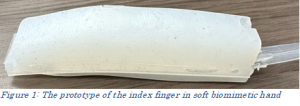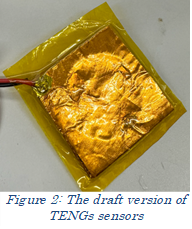メンバー | Le Quoc Tin
The research aims to maximize the computing power of the soft biomimetic hand by embedding Triboelectric nanogenerators (TENGs), which are an innovative type of soft sensor. The integration of TENGs sensors into the finger joint areas of the soft actuators generates a wide variety of dynamics through its physical properties and can be utilized as computing data for specific purposes such as object detection and classification, by controlling the internal pneumatic pressure. The soft pneumatic actuator will be designed and fabricated using the novel structure and the human-hand biomimetic design. This design will optimize the manipulating behaviors of the system, allowing it to handle irregularly shaped objects easily and effectively while still maintaining the advantages of soft-material manipulators. In contrast to conventional soft actuators with pleated air chamber structures, the new design enables several advancements in grasping tasks. The triboelectric nanogenerator sensors have proven their performance in several applications through recent research publications by their low-cost, self-powered, and easy-to-fabricated features. Moreover, TENGs sensors also offer a wide range of materials selections, eco-friendly and inexpensive fabricated processes, and flexibility in customization for several applications. By integrating TENGs sensors into the soft biomimetic hand, we can optimize the system’s information processing capability by monitoring the soft hand actuation and physical properties of surrounding objects without losing their original dynamics.


最近のコメント